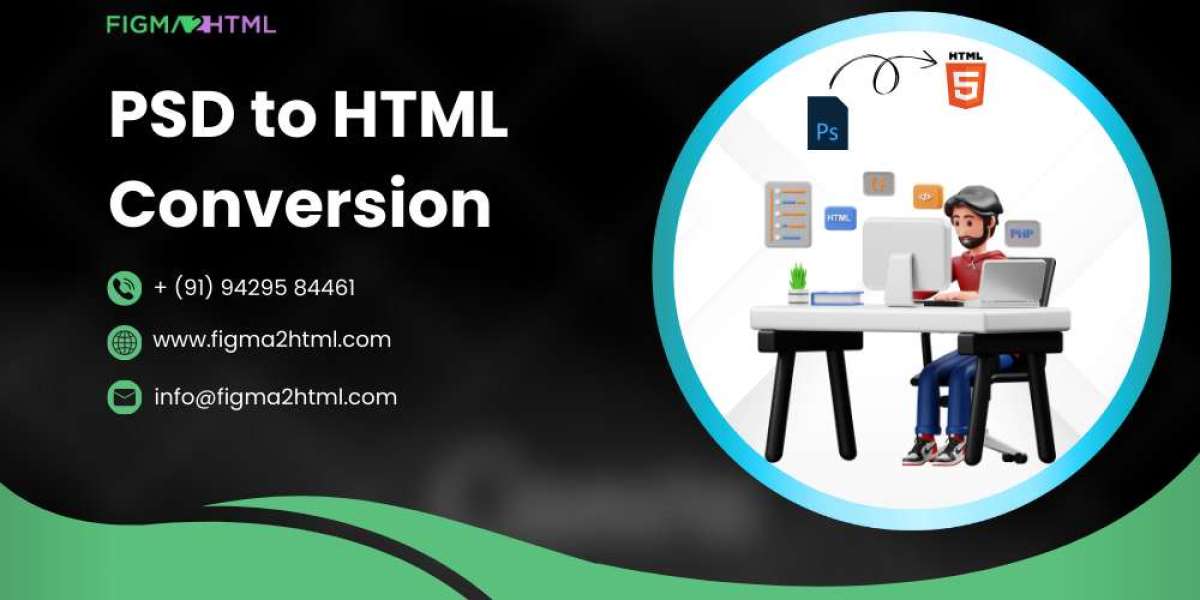In the ever-evolving world of web development, the importance of clean, semantic code has never been greater. As businesses continue to focus on performance, accessibility, SEO, and maintainability, developers who convert PSD to HTML must do more than simply match visual designs—they must write code that serves both users and machines.
In 2025, PSD to HTML conversion is still a cornerstone service for transforming static Photoshop designs into interactive, responsive, and standards-compliant websites. But what sets top-tier conversions apart is how well they adhere to modern best practices—especially around semantic HTML and clean coding.
In this article, we explore the latest trends, benefits, and best practices for creating clean, semantic code when you convert PSD to HTML.
Why Semantic HTML Matters in 2025
Semantic HTML refers to using HTML tags that convey the meaning of the content inside them. For example, using <article>, <header>, <section>, and <nav> instead of generic <div> tags helps browsers, screen readers, and search engines better understand the structure and importance of your content.
Key Benefits of Semantic Code:
Improved SEO: Search engines prioritize well-structured content. Semantic tags help bots index pages accurately.
Accessibility: Screen readers rely on semantic markup to provide users with a meaningful and navigable experience.
Maintainability: Clean code is easier to read, update, and debug—crucial for long-term project health.
Performance: Cleaner HTML and CSS often result in leaner pages and faster load times.
2025 Trends Shaping PSD to HTML Conversion
As you convert PSD to HTML in 2025, it's not enough to slice and code. Let’s explore the current trends influencing the process:
1. Component-Based Coding
Inspired by frameworks like React and Vue, component-based development is now being applied even in static HTML/CSS workflows. Reusable components (like buttons, cards, modals) allow for consistent design, faster development, and easier updates.
2. Mobile-First and Responsive by Default
Gone are the days when responsiveness was an afterthought. Today, every PSD to HTML conversion must be mobile-first, with flexible grids and fluid layouts that adapt beautifully to all screen sizes.
3. CSS Grid and Flexbox Domination
Modern layout techniques like CSS Grid and Flexbox offer more semantic and cleaner ways to structure layouts than outdated float-based methods. They're perfect for maintaining alignment with Photoshop layouts while keeping code concise.
4. Accessibility as a Core Requirement
Accessibility (A11Y) is now a must. Using semantic tags, ARIA labels, and keyboard-friendly interactions ensures your HTML is usable by everyone, regardless of ability.
5. Dark Mode and Theming Considerations
Designs often include light/dark themes. When converting PSD to HTML, use CSS custom properties and semantic classes to accommodate them seamlessly without duplicating code.
Best Practices: How to Convert PSD to HTML with Clean, Semantic Code
Here’s how you can ensure your next conversion project meets modern standards.
1. Start with a Structured HTML5 Skeleton
Use HTML5 as the base for all projects. Begin with a semantic structure like:
<body>
<header>...</header>
<nav>...</nav>
<main>
<section>...</section>
<article>...</article>
</main>
<footer>...</footer>
</body>
Avoid overusing <div> tags, and always use elements that describe their purpose.
2. Use Meaningful Class Names
Follow BEM (Block Element Modifier) or similar naming conventions. For example:
<div class="product-card product-card--featured">
<h2 class="product-card__title">New Arrival</h2>
</div>
This approach ensures clarity, reusability, and scalability.
3. Stick to CSS for Styling, Avoid Inline Styles
Keep styles in a separate CSS file or use pre-processors like SCSS for modular code. Avoid inline styles unless absolutely necessary for performance (e.g., critical CSS above-the-fold).
4. Make Use of Modern CSS Features
Use CSS Grid for two-dimensional layouts.
Use Flexbox for one-dimensional layouts (rows or columns).
Use Custom Properties (CSS variables) for theme flexibility.
5. Write Accessible HTML
Always use
<button>for buttons, not<div>.Use
altattributes on images.Add
aria-labelswhere necessary.Make forms keyboard-accessible.
6. Optimize Images and Assets
When exporting from PSD, ensure images are optimized. Use modern formats like WebP and SVG where possible for faster loading and better scalability.
7. Use Lazy Loading and Responsive Images
Add loading="lazy" to non-critical images and use srcset for resolution-based loading:



